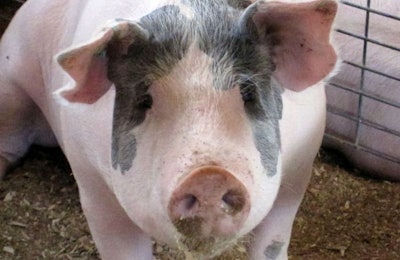
The Chinese pet food market expanded dramatically over the past decade, and Euromonitor now ranks China as Earth’s twelfth largest pet food market. Many dog and cat foods in the growing Chinese market contain ingredients that ancient farmers domesticated in what is now China, including pork, rice, millet and soybeans.
Considering the growing popularity of promoting pet food ingredients’ origin claims, these plants and animals may have a role in pet foods with East Asian themes. Regardless of whether pet food consumers know their anthropological backstories, formulators use these ingredients to provide nutrients in dog and cat foods, wrote Greg Aldrich, PhD, pet food program coordinator at Kansas State University, in his Petfood Industry Ingredient Issues column.
1. Rice
Rice (Oryza sativa) may have been domesticated in two places, approximately 8,000 to 9,000 years ago, reported Nature. Short-grained rice may have originated in China, while the long grained variety was domesticated in India.
Rice has been a staple in pet food diets for decades and despite some minor controversies remains a high-quality supply of calories, according to Aldrich.
According to Petfood Industry’s Dog and Cat Food Ingredient Center database, rice as a pet food ingredient is found in:
1,106 dry dog foods (49.13 percent)
406 canned dog foods (29.66 percent)
444 dry cat foods (46.9 percent)
331 canned cat food (23.36 percent)
2. Soybeans
Since perhaps 7,000 years ago, Chinese farmers have been improving soybeans’ (Glycine max) value as a crop, wrote scientists in PloS ONE. Soybeans too may have been independently domesticated in several areas of East Asia, such as Korea, they wrote.
Newspaper and magazine articles tout the benefits of soy, and promotions for soy-enriched products seem to be everywhere, especially with the current popularity of low-carb diets, wrote Aldrich. However, mainstream pet food products tend not to promote soy as a benefit for dog or cat health.
According to Petfood Industry’s Dog and Cat Food Ingredient Center database, soybeans appear in:
291 dry dog foods (12.93 percent)
139 canned dog foods (10.15 percent)
236 dry cat foods (16.65 percent)
188 canned cat food (19.87 percent)
3. Millet
One of the most ancient grains from China, millet, has become a novel ingredient in pet foods. Early farmers of what is now the Middle Kingdom have cultivated common millet (Panicum miliaceum) since between 10,300 and 8,700 years ago, wrote researchers in the Proceedings of the National Academy of Sciences. Like soy and rice, other forms of millet were domesticated outside China.
With good protein quality and more fat than most grains, millet has the potential to serve as an alternative ingredient in pet food, wrote Aldrich. Pet foods containing millet are typically promoted as premium and are positioned as alternative ingredient choices, he noted.
130 dry dog foods (5.78 percent)
2 canned dog foods (0.15 percent)
25 dry cat foods (2.64 percent)
0 canned cat food (0.0 percent)
4. Pork
Humans seem to have domesticated pigs (Sus scrofa) in at least two regions. One was the Anatolian peninsula, modern Turkey, and the other was the Mekong Valley of southern China, according to Science.
According to Petfood Industry’s Dog and Cat Food Ingredient Center database, pork is found in:
206 dry dog foods (9.15 percent)
105 canned dog foods (7.67 percent)
79 dry cat foods (8.35 percent)
125 canned cat food (8.82 percent)



















